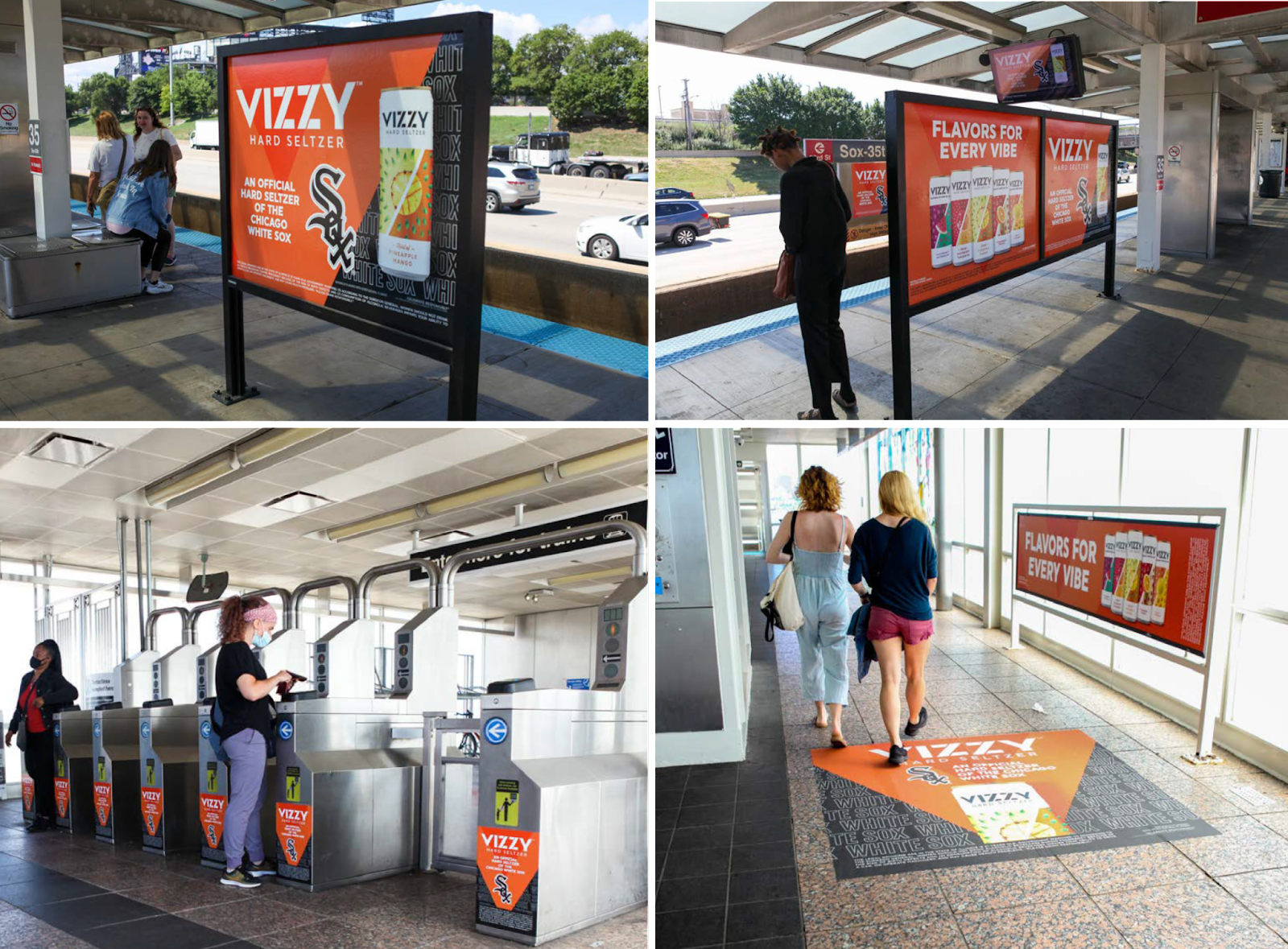Subway and Light Rail ridership will never be what it was pre-pandemic. Ridership was on the rise post-pandemic, but those numbers have plateaued in the last year or so. Many office workers are not returning to full-time in-person work.
But, there are still many, many people who rely on Subways for public transportation. They use it either for commuting to work or commuting to other activities daily. According to the American Public Transportation Association (APTA), over 154 million rides were recorded on Subway and Light Rail in Q4 of 2022.
In this article, you’ll learn all about Subway advertising, why it’s still relevant, the formats available, and how to successfully use it in an Out-of-Home (OOH) strategy.
What is Subway & Commuter Rail Advertising?
Subway and Commuter Rail advertising targets transit riders in urban and suburban areas. Subway advertising comes in many formats. These formats include Posters, Digital Displays, and other media in and around subway stations, subway cars, commuter rail stations, and commuter rail cars.
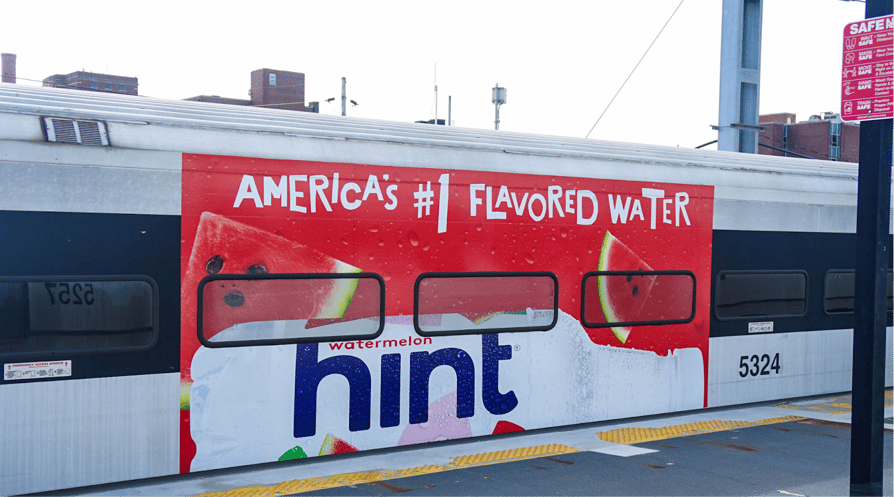
Subway ads target a diverse and captive audience that regularly spends significant time on transit. Commuter Rail and Subway advertising are very similar. Commuter Rail sometimes targets commuters who travel longer distances and spend more time on the train than Subway commuters.
What Types of Ads and Formats are Available on Subway Advertising?
There are a variety of formats available for Subway advertising. Some are only available in some markets. For example, Subway Liveboards (or Digital Kiosks) are only available in the largest markets, such as NYC and Washington, DC. But many formats are available in the majority of markets.
- Platform Posters: Often called One-Sheets and Two-Sheets, these ads are located on subway and commuter rail platforms.
- Rail Kings: Large Posters on the exterior of rail cars.
- Interior Cards: Interior Car Cards are typically placed above the seats or on the walls of the train cars
- Train Wraps: This is a type of advertising where an entire subway or commuter rail car is covered with an advertisement. It can be a highly visible and attention-grabbing form of advertising.
- Urban Panel: These ads reach audiences outside the entrance to a station.
- Liveboard Digital Ads: These digital screens can show real-time information such as train schedules or delays, as well as targeted ads.
- Subway Entrance Domination: An immersive and visually striking experience, this type of advertising involves covering subway entrances including walls and floors with ads from one brand.
- Subway Brand Train: Similar to an entrance domination, but this involves branding the entire interior and exterior of a train car.
- Other Spaces: Depending on the transit agency and station, they may also offer Floor Graphics, Stair Risers, Escalator Wraps, or hanging Banners.
Choosing the correct format or formats to reach your audience is essential. But so is knowing what does and doesn’t work in modern Subway advertising.
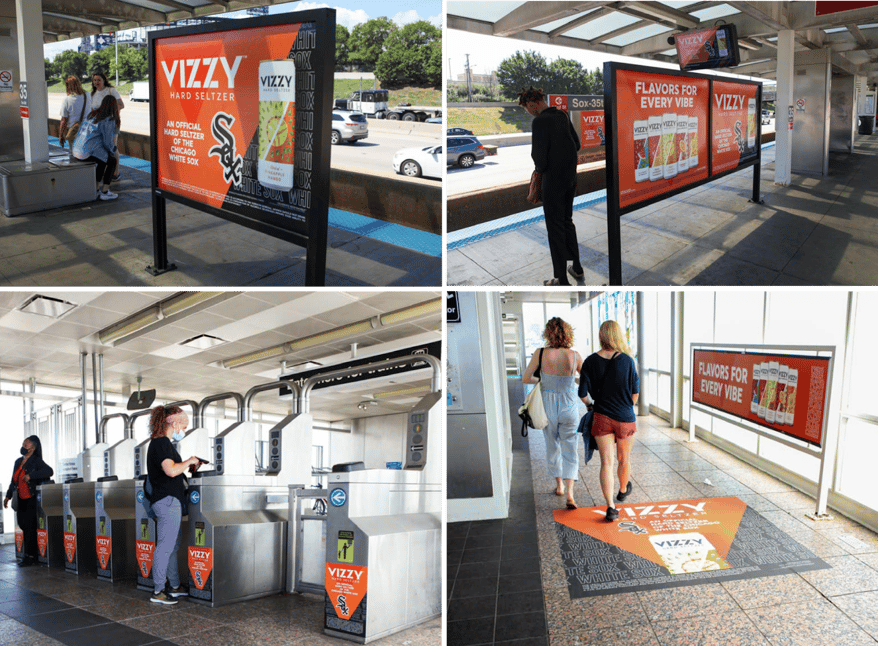
What are the Benefits of Subway Advertising?
Subway and Light Rail advertising work well for several reasons. Outdoor advertising is generally a way to get around ad blocking and privacy restrictions. This is because the advertising exists in the real world, where it cannot be avoided. Here are some of the other benefits of using Subway advertising in your next campaign
- Reaches a Large Audience: Ridership numbers are down from 2019, but many people still rely on public transportation to get around. Subway systems and light rail can be much faster than taking a bus or car in some locations.
- Reaches a Diverse Audience: Everyone takes the subway. It is the people’s transit. Workers, seniors, families. Those who live in high-traffic and limited parking areas where traveling by car is inconvenient, such as NYC, will often take the subway over other modes of transportation.
- Captive Audience: Your audience is waiting for their train or waiting on the train. They need to be attentive to when their specific train is arriving or when they reach their stop. They don’t have much to do other than wait and look at your ads. Subway advertising's high dwell time gives audiences more time to react and respond to your message.
- High Visibility: Ads are placed strategically where your audience will likely see them.
- Audience Targeting: Advertisers can target by demographics or neighborhoods. This helps them reach the consumers most likely to interact with their brand.
How to Be Effective in Your Subway Advertising Strategy
Subway advertising has changed. Before, people were commuting daily to downtown areas and financial districts for work. Now, many workers are on a hybrid or remote work schedule. Ridership to popular business hubs has plummeted during the work week. Only 9% of New Yorkers are back to working in the office full-time. About 60% have hybrid schedules.
These numbers are not expected to increase. It’s true that commuter ridership has risen for nearly every market but plateaued.
This has created some considerations for Subway advertising. Numbers are still high. In NYC, four million people use subways daily. Around the world, many people still depend on light rail and subway. But the way they are using these forms of transit is different.
For example, on the weekends, ridership is nearly at 2019 numbers. Many people still ride the subway daily but go to the financial districts less. This changes the overall OOH strategy in a few key ways:
- Advertisers should target specific neighborhoods instead of targeting financial and business districts. This creates an opportunity to use hyperlocal advertising that targets a specific community.
- OOH strategies should include more than Transit formats to be the most effective. Consider having supplemental Street Furniture or Billboards to enhance your campaign.
- People are not leaving their houses for work during the week, but they are leaving the house. They are moving in different patterns. They may go to lunch or meet in an area with entertainment or activities.
- Advertisers can use demographic and psychographic targeting to find their audiences. They can have more targeted and nuanced campaigns that focus on specific neighborhoods within a major city. This could yield more effective results than advertising in a city's business districts.
Subway campaigns are much more spread out now rather than centralized. Advertisers can develop specific strategies to target their audiences based on their neighborhoods and the new places they frequent instead of the office.
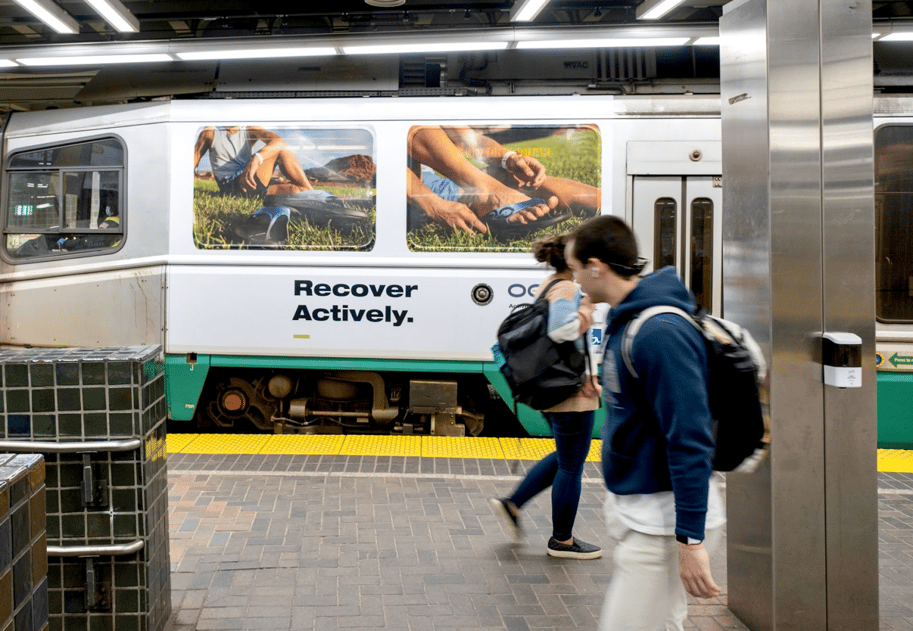
How is the Success of Subway Advertising Measured?
In general, most Subway Advertising inventory is not audited by Geopath. The Transit Authority provides ridership numbers. Depending on the market, those can be provided daily or weekly. For example, in NYC, they are provided daily by station. This tells us how many people enter or exit from one station on a particular day. It allows us to really understand the patterns of where people are going and coming from. Although we cannot follow individuals, advertisers can get a general idea of where people are coming from and going. Here are some of the standard ways for measuring advertising effectiveness used in Outdoor Advertising that can be applied to Subway Advertising:
- Reach: This is the number of people exposed to the ad. Ridership data can estimate how many people saw an advertisement in a location.
- Impressions: The number of times an ad was viewed. This could mean the same person seeing the ad more than one time. Subway advertising can generate high impressions due to ridership frequency and ads being strategically placed.
- Frequency: The number of times an individual sees an ad is the frequency. Regular subway riders will likely encounter your ad multiple times.
- Engagement: Striking Subway advertisements or Dominations can yield engagements extending the ad's lifespan—for example, people sharing pictures of the advertising on social media.
The success of Subway advertising can be measured in several ways, depending on your campaign’s goals. This helps you know your campaign's effectiveness and adjust as needed.
Great Examples of Subway Campaigns
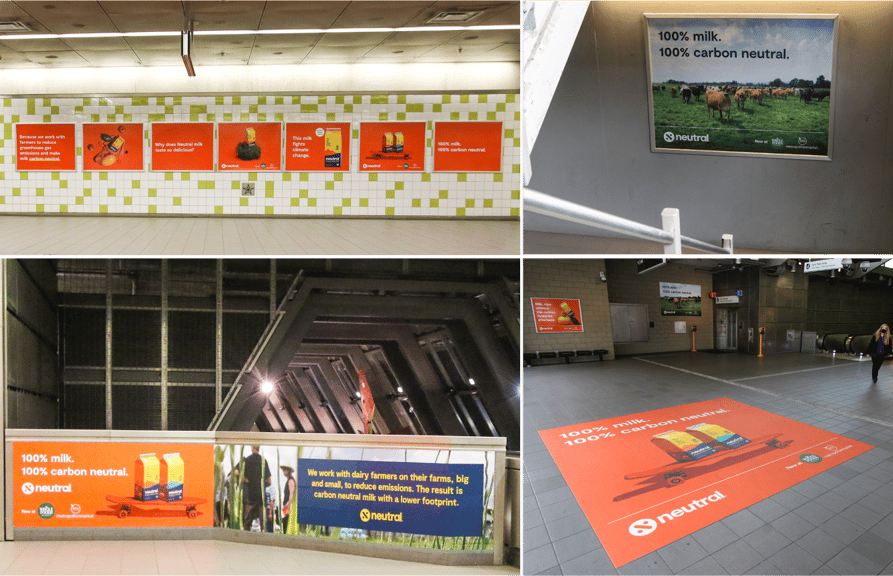
Neutral Milk executed a Station Domination at Capital Hill Station to promote their carbon neutral milk.
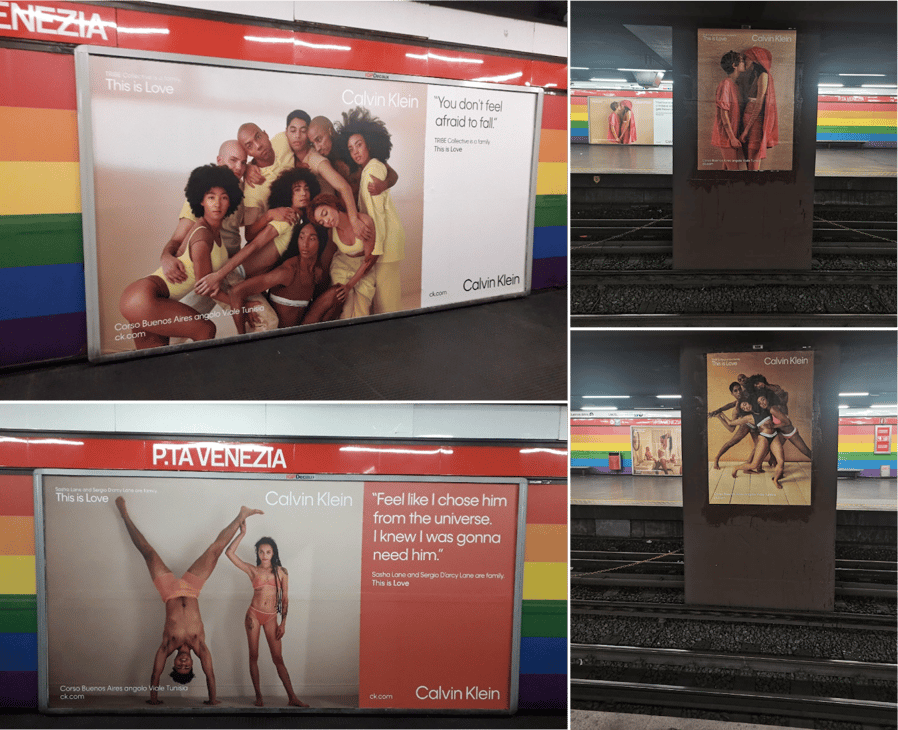
Calvin Klein’s This is Love Campaign spanned multiple countries and cities, and included a range of formats from Wildpostings and high impact Wallscapes to Station Dominations and Tram Wraps.
How Does Subway Advertising Fit into Your Overall OOH Strategy?
Though ridership is not what it once was, Subway advertising can be valuable to an overall OOH advertising strategy. It helps businesses reach a large and diverse audience, particularly in urban areas where subway systems are often heavily used and offers long dwell times to engage with the message.
When incorporating Subway advertising into an overall OOH strategy, it's essential to consider the campaign's target audience, messaging, and creative elements. Subway can be used as a standalone campaign, but adding it to a more extensive outdoor campaign media mix is recommended for the best results.
Billups can help you to plan your Subway or Light Rail advertising campaign. We know the markets and how they have changed over the last few years. We can help you find your target audience where they now frequent and secure the best placements for your brand and campaign goals. Reach out to us today to learn more.
